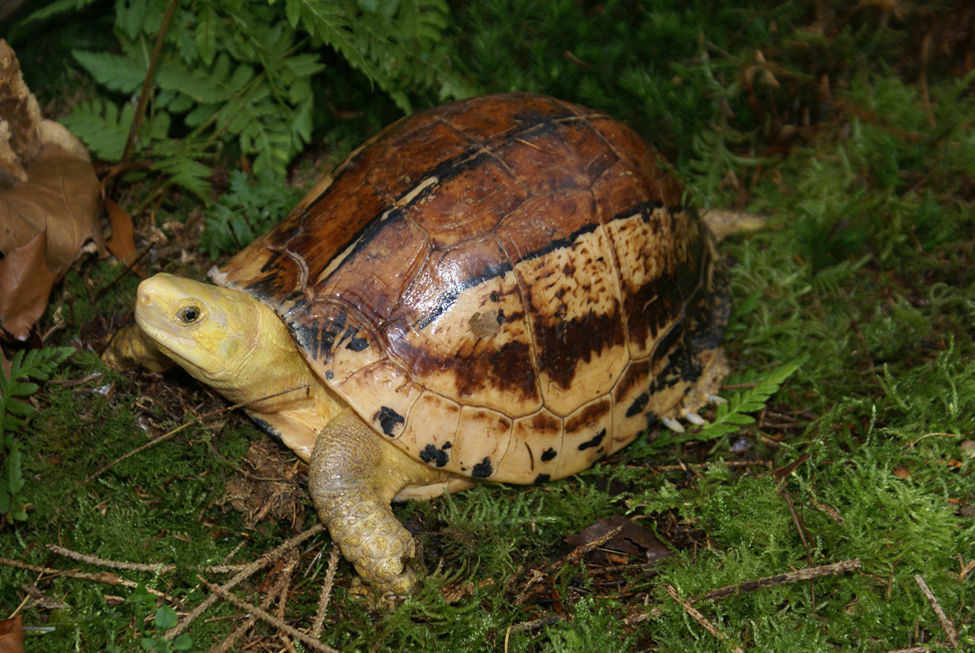top of page

Cuora picturata (Lehr, Fritz & Obst 1998)
This recently described, highly terrestrial member of the genus Cuora inhabits evergreen forests at elevations of 300 to 600 m in a rather tropical climate, rarely falling below 18° C, on the Lang Bian Plateau in southern central Vietnam. C. picturata is known from two provinces, Khanh Hoa and Phu Yen, and may also occur in Dac Lak Province. It took scientists until 2010 to locate this species in the wild.
C. picturata is characterized by an orange-brown to dark brown carapace with a cream-colored band extending along the lateral side, through each costal scute. It has a cream/yellow head with fine grayish reticulations, and a cream plastron with a large black spot on each scute. The species reaches 15–19 cm SCL. Males usually have a slightly concave plastron, larger claws and a thicker and longer tail than females. The remaining suitable habitat of this species covers less than 3000 km2, and it is estimated that at most 3,000-10,000 animals survive in the wild (a very optimistic range of values). The species was hunted for local consumption in historic times, but now virtually all specimens found are smuggled to Chinese pet and food markets or sold as medicine, despite CITES Appendix II ranking, which has been in effect since 2000 and subsequently elevated to App I in 2019. Along with high hunting pressure comes habitat destruction from logging and conversion of forest into farmland. This species is rather delicate to keep in captivity and easily stressed. Successful breeding is still uncommon but increasing; the small clutch size of 1–3 eggs makes growth of captive colonies even slower. It is estimated that fewer than 500 specimens exist in captivity, with only about 20% of those specimens enlisted for assurance colony purposes.

© Cuora.org
© Cuora.org
bottom of page











